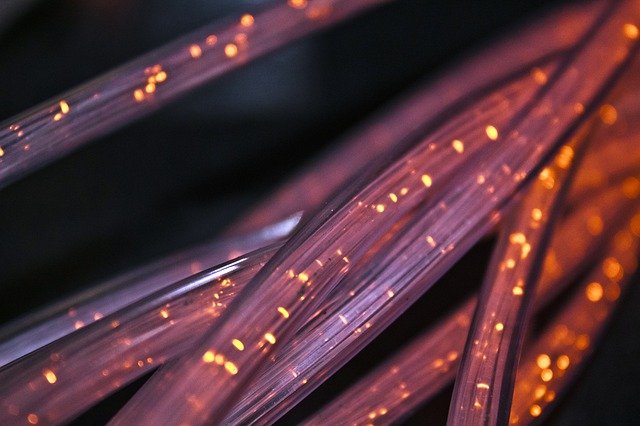Fiber Optics Solution Philippines
Fiber Optics
Next generation Datacenters need next generation speeds and we can’t afford data loss due to interference. So we need to move ahead from copper cables and move towards fiber cables
Fiber optical cables are the fastest media currently and apt for the modern day DCs.
Fiber cable is not prone to EMI and alien cross talk.
Optical fiber cable and its equipment save a lot of space and don’t look as bulky as copper cabling.
Fiber optic cabling goes up to the speeds of above 100 G.

Types of fiber cables
There are two types of fiber cables:
- Single mode
- Multi-mode
Single mode cables are useful where we need more bandwidth and the distance is more than 3 miles. Single mode fibers cost much and at the same time they need a light source with a narrow spectral width. Single mode fibers are made of glass fiber with diameter of 8 – 10 microns.
However single mode fiber cable reduces attenuation due to the small core and hence it’s the best option in environments where we need highest performance and budget is not a concern.
On the other hand, multi-mode cables are made up to glass fibers with diameters of 50 – 100 microns. Multi-mode cables are typically used when we need high speed transmission at shorter distances. Most common size of multi-mode cable is 62.5 microns.
We also have Plastic based optical fiber now which gives us very good speeds at a comparatively lower cost.
Generally fiber cables are bundled up based on the requirement if it’s indoor or outdoor. Also the cores are bundled in a jacket a lot of different ways based on cable construction and application. Standard sizes are 2 core, 4 core , 6 core , 8 core, 12 core and 24 core fiber. We have cables having more than 24 cores also however then onwards we have sizes with increasing multiples of 12.
Choosing the correct type of cable
The decision on which cable to use is purely based on the transmission distance and the budget allocated. Also if you use a single mode fiber, make sure you have equipment compatible with it. Multi-mode equipment won’t inject enough light required for a single mode fiber.
Key Components of Fiber optical network
Fiber Optic Termination Kit
A fiber optic termination kit plays a key role as it is the junction where the fiber optic cables connect to the other equipment that works on electrical signals which. (Basically our switches, routers, servers and other Datacenter equipment)
A fiber optic termination kit is nothing but a connector between optical fiber and the regular DC equipment.
Two mostly used fiber optic termination solutions are pigtails and fan-out/breakout kits.
A Pigtail is generally a single cable with a connector at the end. It will have female or male connectors. Female connectors are usually required when we are plugging the fiber to a patch panel. Male connectors directly plug into the transceiver. (A SFP)
A Fan-out kit is used to protect fragile strands of fiber from a cable. It’s basically an empty jacket used to protect the fiber. Breakout kits help us by enabling the termination of fibers of a buffered cable to connectors without actually splicing the pigtails.
These work with patch panels and form a strong network with very high speed and very less attenuation.
Fiber Optic Patch Panel
Patch panels are used in the network to reduce the need of lengthy cables and hence reduce the attenuation loos due to transmission in a single cable. Patch panels terminate an optical cable and connect them back to the end device so we effectively cut sort the lengths of the cables and the cabling is not as bulky as it would be without a patch panel .
Patch panels work in tandem with the optical fiber connectors and a connector has to be very good to minimize the signal loss due to reflection.
Fiber Optic Patch Chord
Patch panels are used in the network to reduce the need of lengthy cables and hence reduce the attenuation loos due to transmission in a single cable. Patch panels terminate an optical cable and connect them back to the end device so we effectively cut sort the lengths of the cables and the cabling is not as bulky as it would be without a patch panel .
Patch panels work in tandem with the optical fiber connectors and a connector has to be very good to minimize the signal loss due to reflection.
Indoor / Outdoor Cables
Based on the requirements we have to choose cables, for indoor usage generally we don’t use cables of higher core bundling. Typical patch chords are an example of cables to be used indoor.
Traditionally fiber optic cables were used to connect huge datacenters and ISP POPs. This is because optical fiber has lowest attenuation. Outdoor cables generally have higher core bundling up to sizes of 144 cores in general.
Advantages of Fiber optic networks
- Fiber optic networks eradicate the need of signal regeneration or strengthening and also cover longer distances as compared to copper.
- Fiber optic networks are a lot faster than traditional copper networks and the new generation low cost fiber also makes it possible to use it in LAN as a backbone.
- Fiber optic cables cost much less to maintain.
- Fiber optic cables are highly resistant to electromagnetic interference from nearby electrical cables , equipment.
- Fiber optic cables are lot slimmer than the copper cables so more fibers can be bundled in a given diameter and look more organized.
- There is no risk of a fire hazard as fiber cables don’t carry any electricity.
- Fiber cables carry more information compared to their counterparts.
Due to all these advantages and the next generation cost effective solutions, fiber is replacing copper in ISPs and most enterprise environments.
